Water has a surface tension. It divides light into bands of energy. It keeps some and sends more away, but not evenly.

So does mullein.

In mullein’s case, it covers its pulpy, absorbent leaves with tiny hairs, which capture the tension of water, like this…

… to create an insulating skin stronger than the pull of the sun to draw the water into the air, kind of a miniature atmosphere, really, like the water spheres on the cattails below …
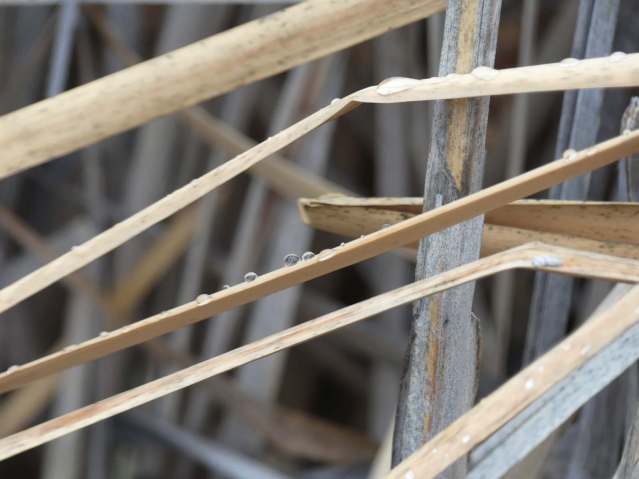
…and then, when it snows, mullein holds that snow up in the air, where the cold air can cool it through the night. Slowly, the sun warms the mullein, from its vertical surfaces, drawing the water down onto its leaves and from there to its core.
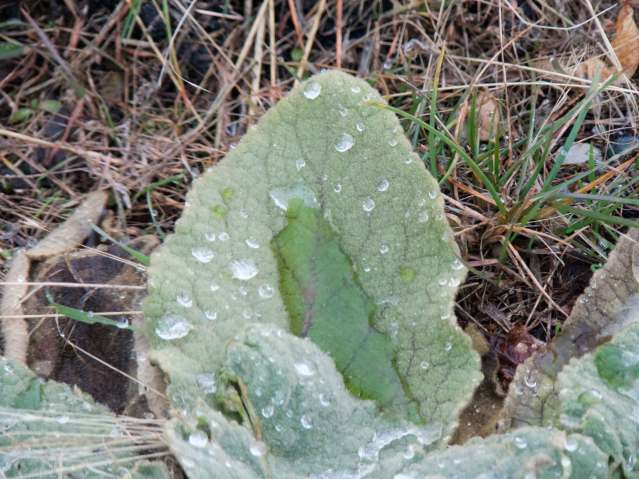
Note how the hairs on the leaves strengthen the surface tension of the water and keep it from spilling off onto the ground. Useful? Sure is. Consider other ways in which the life up the hill is slowing down and channelling the melting of the snow that fell overnight, and channelling it. Look how the sun and the angle of the earth …
 … are transforming time (as measured by water), depending upon exposure. The cottonwoods do this trick in the angles of their branches, from which meltwater spreads slowly outwards over their bark…
… are transforming time (as measured by water), depending upon exposure. The cottonwoods do this trick in the angles of their branches, from which meltwater spreads slowly outwards over their bark…
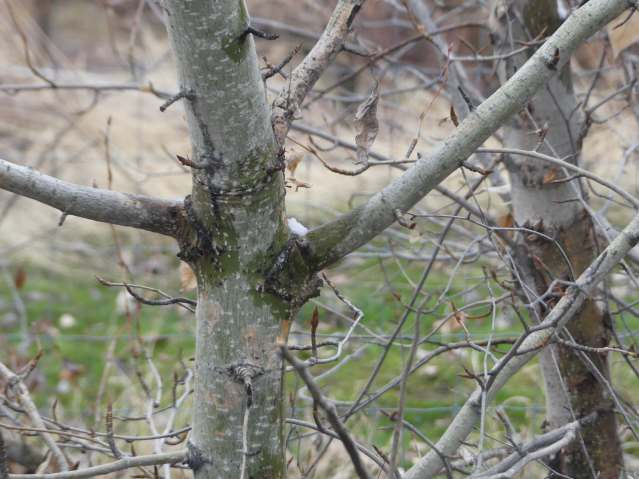
… hold it in lateral cracks, from which it is slowly released…
… and even twist it through a 90 degree turn by balancing the pull of gravity and the build up of tension on the bark to move it as a film.

Note as well the seam running across the upper side of the limb. In cottonwoods, those hold so much water for so long that they eventually rot the tree out from within. It drops branches because of this action, and then houses owls.

It inspires water collection devices which gather snow in multiple ways and deliver it through systems of cracks into an inner trunk, where it can be held through drought. Still, even rock is playing this game.

This rock pile, formed by centuries of water and frost action on stone, is little different than the plants above: snow held away from the sun melts slowly, feeding an elaborate plant community through a series of cracks, while the bulk of the snow melts quickly, disappears into the warm darkness between the rocks, and from there into deeper soil. Protected from the sun, it flows downhill.

All you need for this is two rocks, really:

What is beautiful about this pair is that the larger rock, with its minerals and its seam of quartz, is facing the warm southern sun. Its snow disappeared quickly, into the plant community at the stone’s base, but look what the smaller stone, of more porous material, has done…
Either it has absorbed the snow (or the run-off) and is releasing it slowly, in a kind of reverse of a heating effect, or it provided a surface that allowed snow to adhere to the larger stone. Either way, it transforms the sun, just as this water does:
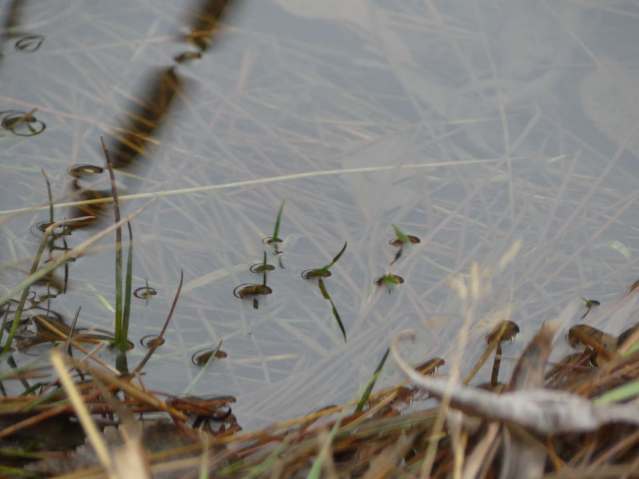
It is, after all, the same snow and the same sun making all these transformations. Here’s a man-made slope doing this work, but vertically instead of horizontally:

In this case, bunchgrass, rooted in the terraces of a stepped wire cage, is stopping the water from flowing, although not stopping the snow from melting or twisting it through time, as the cottonwood does. It simply melts it quickly, then holds onto it, creating a slow waterfall weaker than the roots of the grass. The base of this simple system…

… is unused, and unlike this slope…
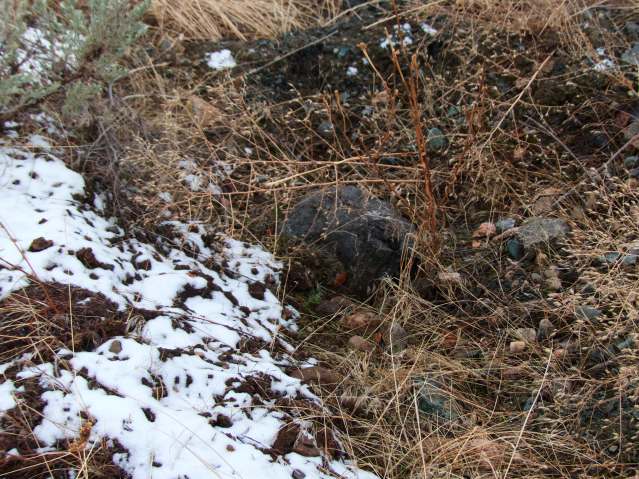
… there is no opposing cool slope to hold the snow, to allow the sun to heat it and slowly melt it down the draw between the two slopes, as the mullein does, in the balance of heat and cold illustrated by this globe of moss.
 Still, we could build water dams on the hill like this, which would slow time, to release water through seepage through the long hot summer, without losing any land at all. Simply, a south-facing slope like this:
Still, we could build water dams on the hill like this, which would slow time, to release water through seepage through the long hot summer, without losing any land at all. Simply, a south-facing slope like this:
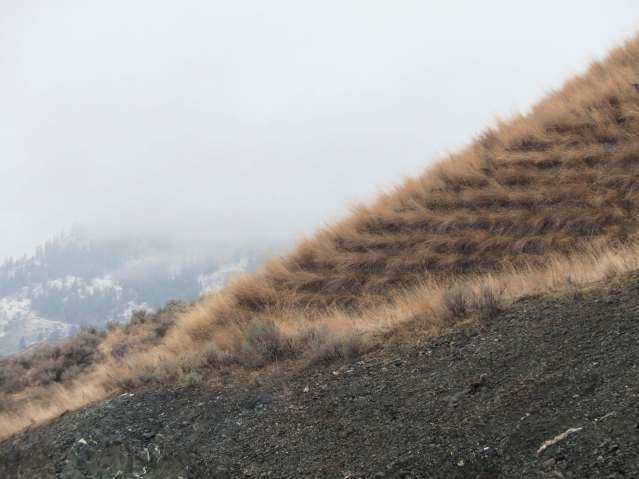
… could be faced with a north-facing one (instead of the open space in which we are standing), which would collect snow and shelter it from the sun. It could even be constructed to channel winter wind and gather deep drifts, to extend melting effects for weeks or months. The melting would come from the south-facing slope we see here. The channel between the two would hold water, which could then be put to use, much like this stone below…

If that’s too much engineering, why not just take that stone as a model and reverse it, like this:

You: Harold! What on earth is that?
Harold: Dearest, it’s a vineyard driveway littered with gravel.
You: That’s what I thought it was! Oh now, look, I have muck on my shoes.
Harold: Those are nice shoes.
You: They were nice shoes. Now they’re mucky. I can’t go to town like this.
Harold: Oh. Sorry. (Pause.) You want to go to town when you have all this cool muck?

You: Yes!
Harold: Oh.
(Harold blushes and continues.)
So, gravel. Look at what it’s doing. Little rocks rise above the cold soil to collect the sun, to melt the snow, which runs off of them and pools at their bases, slowly seeping into the soil instead of running off.

As the sun continues to warm the stones, the absorption area spreads…

… and we have stopped time by storing snow, releasing it slowly and storing the resulting water at a rate matched to the capacity of the soil. It will be released as life and slow subsurface flow through the spring, which is great, but what if we just reimagined the process slightly, laid down an absorbent mat covered with tiny hairs, like the mullein, with little heat units, either spikes of grass or blocks of stone, rising at intervals out of the hairs, to catch snow at various depths and melt it slowly down into the mat. If the mat were on a wall surface …

the heat unit could be below, and lined, like this wood, with vertical conduits that could fill with water. A fence made out of gravel in a cage, or simply stacked rock, would do as well. If the mat were on a road surface or a walking surface…

… the pressure of traffic could squeeze it into transport or deeper capture structures. In all cases, the water will follow the pressure exerted on it in such a way that it maintains bonds with itself, like this flock of starlings…
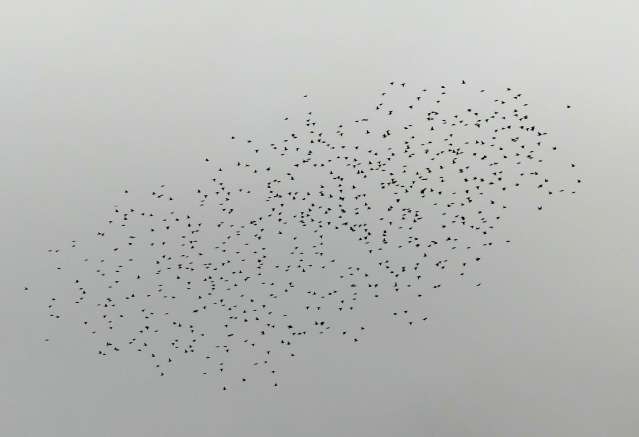
… or these juniper berries, so pungent and yet so sweet.
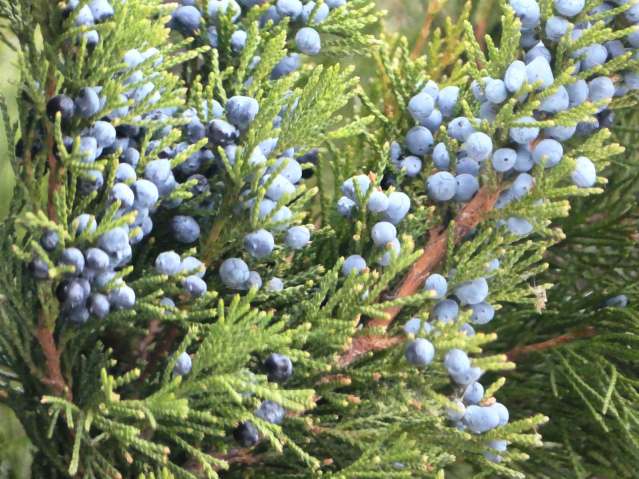
The transportation of water is only the manipulation of water tension and time, in relation to the sun. For that, the transportation is more across a membrane …

…than from high country dams to low country farms…
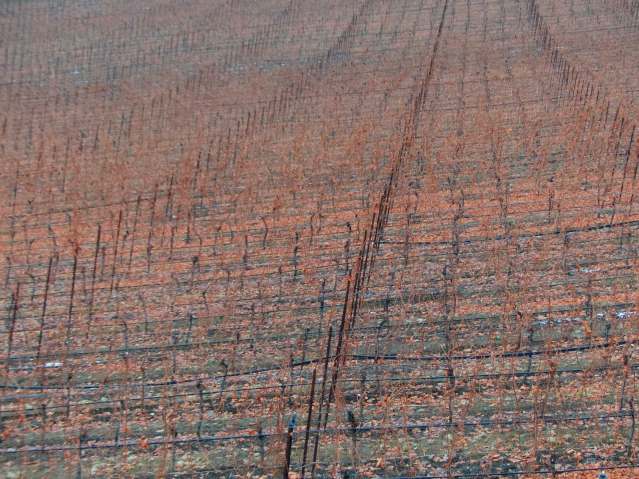
In this vineyard, much of this work is already being done, but in a model conducive to machine harvesting and the capitalization of water (huge volumes are required to pay for the huge cash outlays required to support the system.) It might be, however, that the heating and cooling effects are as simple as turning stones over, so that their white bellies, of solidified soil salts brought to the surface by the sun, send that sun away, to allow the stones to operate as the engines of cold we need them to be at this time.
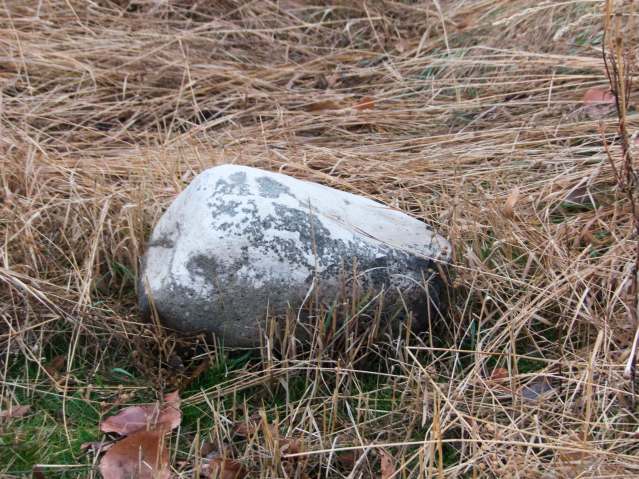
We could turn them over again when we need heat. In fact, if the stones took the shape of trees…

…they could be both at once. Time to go out and plant some trees.
Categories: Atmosphere, Earth Science, Global Warming, Grasslands, green technology, Innovation, Land Development, landscaping, Nature Photography, Science, Soil, Sun, Water, Water Farming


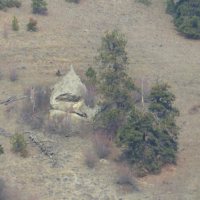


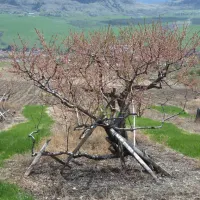








I love this- seeing how things work in nature through your eyes. You are a good teacher, Harold. My Dad would have liked you. He was an observant farmer and knew how to find water. My Mom too. She would put out sardine tins of water so the birds would leave her some of the strawberries she planted in our prairie garden. The tiny, wild strawberries were the best. Thank you. Ruth
On 14 December 2017 at 21:53, Okanagan Okanogan wrote:
> Harold Rhenisch posted: “Water has a surface tension. It divides light > into bands of energy. It keeps some and sends more away, but not evenly. So > does mullein. In mullein’s case, it covers its pulpy, absorbent leaves with > tiny hairs, which capture the tension of wa” >
LikeLike
Thanks for walking through the muck with me! 🙂
>
LikeLike
I feel like I’ve been taken for a ride! A good one though. 🙂 It always impresses me that you have equally strong insights into the physics of space and the poetics of space. And humor this time, too! All good!
LikeLike
Humour, indeed. I can laugh myself silly. 😉 I am trying to write a combined poetics/physics book about water. It needs one more revision. Lots of fun.
>
LikeLike